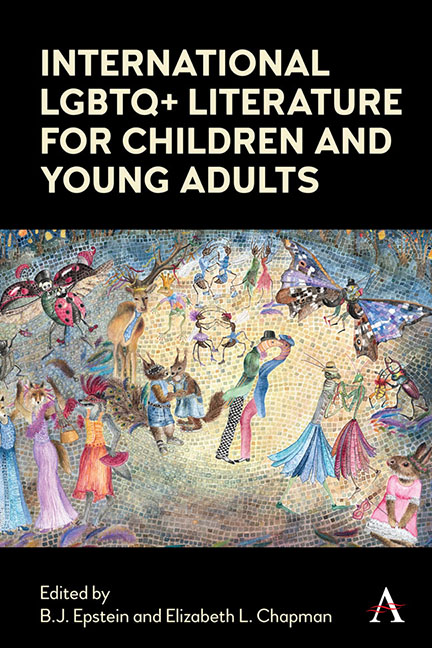Book contents
- Frontmatter
- Dedication
- Contents
- List of Illustrations
- Acknowledgements
- Notes on contributors
- Introduction
- BRAZIL
- FRANCE
- GERMANY/ AUSTRIA
- GREENLAND
- INDIA
- INDIGENOUS WRITING
- ITALY
- MULTINATIONAL
- MULTINATIONAL
- MULTINATIONAL
- THE PHILIPPINES
- SLOVENIA
- SOUTH KOREA
- SPAIN
- SWEDEN
- SWEDEN
- List of Primary Texts
- Index
Chapter Six - Un-settling Gender and Sexuality: Indigenous LGBTQ+/ Two-Spirit Literature for Young People
Published online by Cambridge University Press: 18 November 2021
- Frontmatter
- Dedication
- Contents
- List of Illustrations
- Acknowledgements
- Notes on contributors
- Introduction
- BRAZIL
- FRANCE
- GERMANY/ AUSTRIA
- GREENLAND
- INDIA
- INDIGENOUS WRITING
- ITALY
- MULTINATIONAL
- MULTINATIONAL
- MULTINATIONAL
- THE PHILIPPINES
- SLOVENIA
- SOUTH KOREA
- SPAIN
- SWEDEN
- SWEDEN
- List of Primary Texts
- Index
Summary
Strange Boy and Shadow Boy realized at last that they had never been alone. They were just the first to free their hearts and fly in their own beauty.
–‘The Boys Who Became the Hummingbirds’ (Justice 2016, 57)Context
It is impossible to understand the construction of LGBTQ+ Indigenous and Two-Spirit identities without understanding settler colonialism. Colonialism wreaked havoc upon all aspects of Indigenous lives, and these included Indigenous perspectives and practices relating to gender and sexuality. However, until recently, much of the understanding of these perspectives outside of Indigenous communities was developed through non-Indigenous anthropological approaches to queer Indigenous lives, leading to further colonization of queer Indigeneity. These knowledges served not only the project of othering Indigenous peoples to settlers through the development of concepts like ‘berdache’ (discussed further below) but, as non-Native scholar Scott Lauria Morgensen has pointed out, also as stories that let ‘non-Native and presumably white gays and lesbians … imagine that minoritized sexuality made them more like Native people than the settler society in which they lived’ (Morgensen 2011, 63). This approach to understanding queer Indigeneity has often resulted in misinformation and appropriation. It is critical to note that Indigenous nations have different traditions, histories and language
It is critical to note that Indigenous nations have different traditions, histories and language surrounding variance in gender and sexuality within their communities: fa’afafine in Samoa, māhū among the Kanaka Maoli in Hawai‘i, wiŋtke among the Lakota, nadleehi in the Dine Nation, among many others. Reading any of these as ‘lesbian, gay, bisexual, transgender or queer’ risks misunderstanding their unique situatedness within the cultures from which they arise, and it would, in fact, be an act of colonization to act as though they map neatly onto Western conceptions of gender or sexuality variance. Indigenous understandings of gender and sexuality arise from within specific nations, and it is not possible to separate these understandings from the traditions and spiritual practices of those communities. While Indigenous peoples share some experiences of colonization and resistance, these specificities inform much of how LGBTQ+ Indigenous, Two-Spirit, or takatāpui people understand their identities.
- Type
- Chapter
- Information
- International LGBTQ+ Literature for Children and Young Adults , pp. 117 - 128Publisher: Anthem PressPrint publication year: 2021



